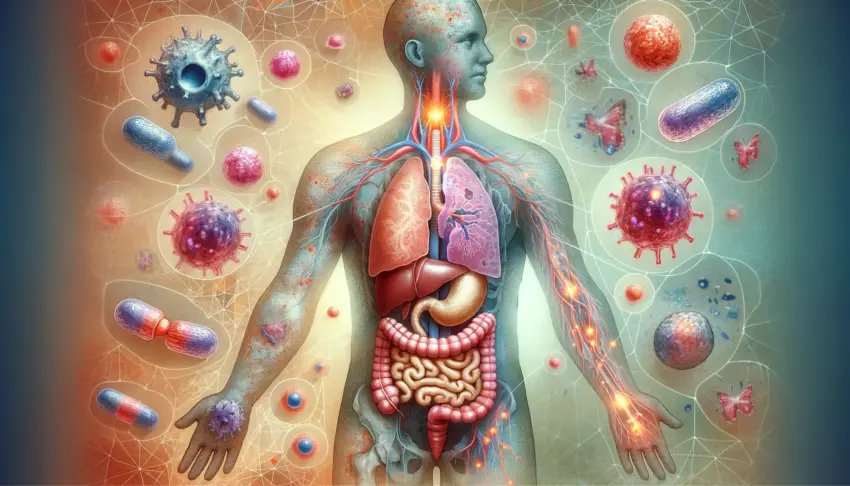| Listen to our audio presentation: Myocarditis: Symptoms, and Treatment |
A recent genomic analysis has revealed that T-cell acute lymphoblastic leukaemia (T-ALL), an aggressive form of blood cancer primarily affecting children, consists of 15 distinct subtypes. Each subtype has been linked to specific outcomes and varying responsiveness to therapies, offering new hope for more personalized treatment approaches.
- Aggressive Bone Marrow Neoplasm: T-ALL is a type of acute lymphoblastic leukemia characterized by an aggressive malignant neoplasm in the bone marrow, leading to the accumulation of immature white blood cells.
- Crowding of Normal Cells: In T-ALL, the excessive buildup of immature white blood cells in the bone marrow crowds out normal cells, which can also accumulate in the liver, spleen, and lymph nodes, disrupting normal organ function.
- Prevalence and Demographics: Approximately 20% of all ALL cases are T-ALL, with the condition being more common in adults than children. However, in the pediatric population, it frequently affects adolescents with a median onset age of 9.
- Molecular and Cytogenetic Origins: T-ALL arises from cytogenetic and molecular abnormalities, disrupting pathways that control thymocyte development, tumor suppression, and cell growth, leading to the disease’s aggressive nature.
- Clinical Presentation: T-ALL often presents with infiltration of the central nervous system (CNS), a mediastinal mass originating from the thymus, and extramedullary involvement of multiple organs due to hyperleukocytosis.
This discovery is particularly significant for T-ALL, which accounts for roughly 5% of all pediatric cancers. Although advances in chemotherapy have improved survival rates, 15–20% of young patients either relapse or fail to respond to standard treatments. This underscores the urgent need for better biological markers to predict which patients might benefit from targeted therapies or innovative treatment strategies.
A Deeper Understanding of T-ALL
T-ALL arises when a mutant stem cell in the bone marrow produces abnormal T-cells, a type of immune cell. Despite progress in treatment, the challenge of dealing with non-responsive or relapsing cases remains. Previous research had identified various subtypes of T-ALL, but none had been comprehensive enough to reliably predict disease outcomes based solely on genetic alterations.
To address this, the study led by David Teachey, a pediatric oncologist at the Children’s Hospital of Philadelphia, involved analyzing the entire DNA sequence of tumor cells and healthy cells from over 1,300 T-ALL patients. By also examining cellular RNA, the researchers were able to gain insight into how gene activity changes in cancerous cells.
Identifying Subtypes and Their Implications
The analysis identified 15 distinct subtypes of T-ALL, some of which had not been previously characterized. Each subtype exhibited unique genetic alterations and gene-expression patterns, which were linked to different treatment outcomes. For example, some subtypes were associated with a higher likelihood of residual cancer cells after treatment, increasing the risk of relapse. Others were correlated with better long-term survival or even the development of secondary cancers in other parts of the body.
One of the study’s key findings is that nearly 60% of genetic changes associated with T-ALL occur in non-coding regions of DNA. These regions, while not directly producing proteins, can still influence gene activity and contribute to cancer development. This highlights the importance of comprehensive whole-genome sequencing in understanding and treating T-ALL.
A Step Toward Personalized Treatment
Using the genetic and clinical data from this study, the researchers were able to classify T-ALL into four risk categories: very high, high, low, and very low. This risk stratification could enable doctors to tailor treatments more effectively, recommending more aggressive therapies for high-risk patients while sparing those at lower risk from unnecessary side effects.
However, the study’s findings need to be validated across diverse populations, as genetic background can significantly affect treatment responses. Despite the current high costs of whole-genome sequencing, the study makes a compelling case for its broader adoption in managing complex cancers like T-ALL.
A Brighter Future for T-ALL Patients
As Jan Cools, a leukemia genetics researcher at the Flemish Institute for Biotechnology, put it, this study will be a valuable resource for everyone involved in treating T-ALL patients. By paving the way for more precise and effective therapies, it holds the potential to significantly improve outcomes for children battling this challenging disease.
Resources:
- Guglielmi, G. (2024). How a trove of cancer genomes could improve kids’ leukaemia treatment. Nature. DOI: 10.1038/d41586-024-02613-0
Signs and Symptoms of T-cell Acute Lymphoblastic Leukemia (T-ALL)

